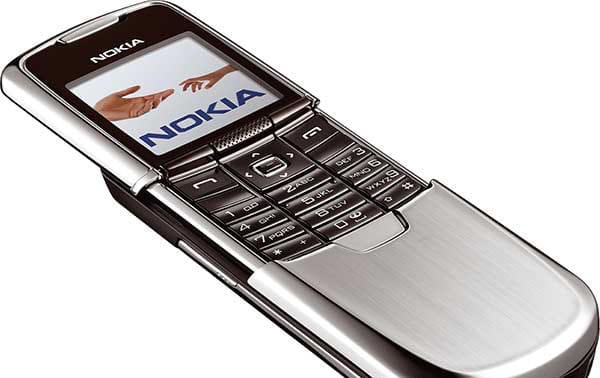Classic Handsets: the Nokia 8800

As part of our classic handsets series, this week we’re taking a look at the old school Nokia 8800, a device that was widely praised at the time of its release for its luxury appearance and premium quality feel. The phone itself was originally available back in 2005, when 3G had only just become mainstream in the UK, and Nokia was at the height of its popularity.
How times have changed…
The Nokia 8800
The Nokia 8800 (usually pronounced as the eight-eight hundred) was considered a luxury mobile phone, and used the then-popular Series 40 operating system, one of the most advanced for its time.
The most striking feature of the 8800 on initial inspection is the stainless steel case with a scratch-resistant screen – that was before the days of Gorilla Glass and the concept of sapphire screens, in fact.
At the time of its release in the UK in October 2005, Nokia boasted that the 8800’s “sophisticated slide mechanism uses premium ball bearings crafted by the makers of bearings used in high performance cars”.
While the UK received the 8800, the North American market saw the 8801 which was compatible with the 850 MHz and 1,900 MHz bands used in the US at the time. Aside from that, the 8801 was almost identical to the 8800, except it could work on 850, 1,800, and 1,900 MHz bands.
The Good, the Bad and the Ugly
The most appealing thing about the Nokia 8800 was its undeniably sexy form factor. It also had Bluetooth (which was not that common at the time), as well as a clear 262,000 colour screen, a speakerphone, and an integrated camera and video recorder.
The eye-catching silver chassis was also thin and compact, measuring just 4.2 x 1.7 x 0.6 inches, certainly small enough to slip into a pocket unlike the behemoths we see today.
Unfortunately, the downside to the radical design was that the keypad was decidedly cramped for anyone with anything except tiny fingers. The battery life was also notoriously poor, and the shiny case and screen were a magnet for fingerprints. Additionally, the battery was hard to remove, and it was also rather expensive for what it offered.

The phone’s SVGA (0.5 megapixel) camera was also rather disappointing for such a high-end phone, but it could take pictures in two sizes – 800 x 600 and 120 x 144 in three quality settings (high, normal and basic). It might seem pretty quaint today, but at the time that wasn’t all that bad…
Despite the 8800’s flawed design and below-par battery life, it was otherwise a beautiful and feature-packed device, and a fine example of the kind of innovative and desirable devices coming out of the Finnish company’s design labs.
Unfortunately for Nokia, just two years later, the company was caught off-guard by the touchscreen wizardry of the first iPhone, after which it began its long, slow decline into irrelevance.
But the memory of the 8800 lives on today. In fact, you can still buy new ones on eBay for around £400, such is the demand even now.
Full specifications of the Nokia 8800 can be found here.
Do you have any recommendations for classic handsets? Were you a fan of the Nokia 8800 perhaps, or were there better phones available at the time?
As always, let us know in the comments below.




